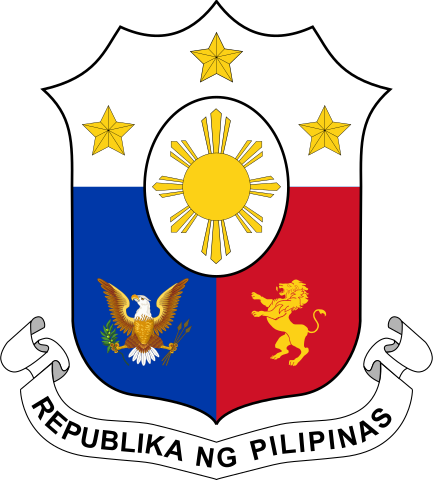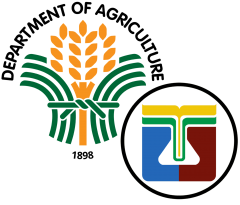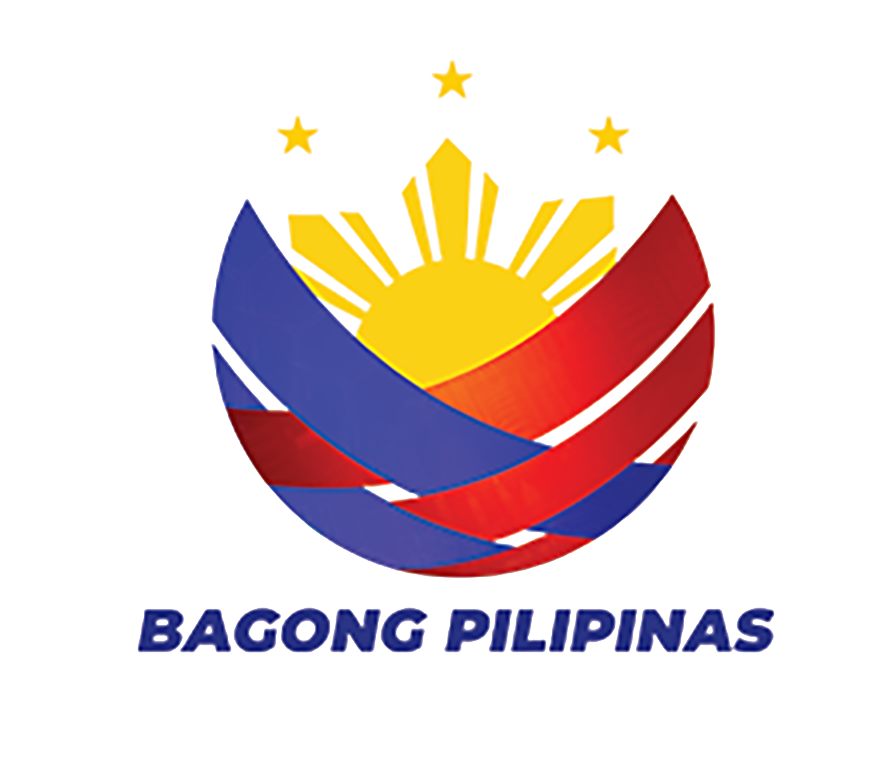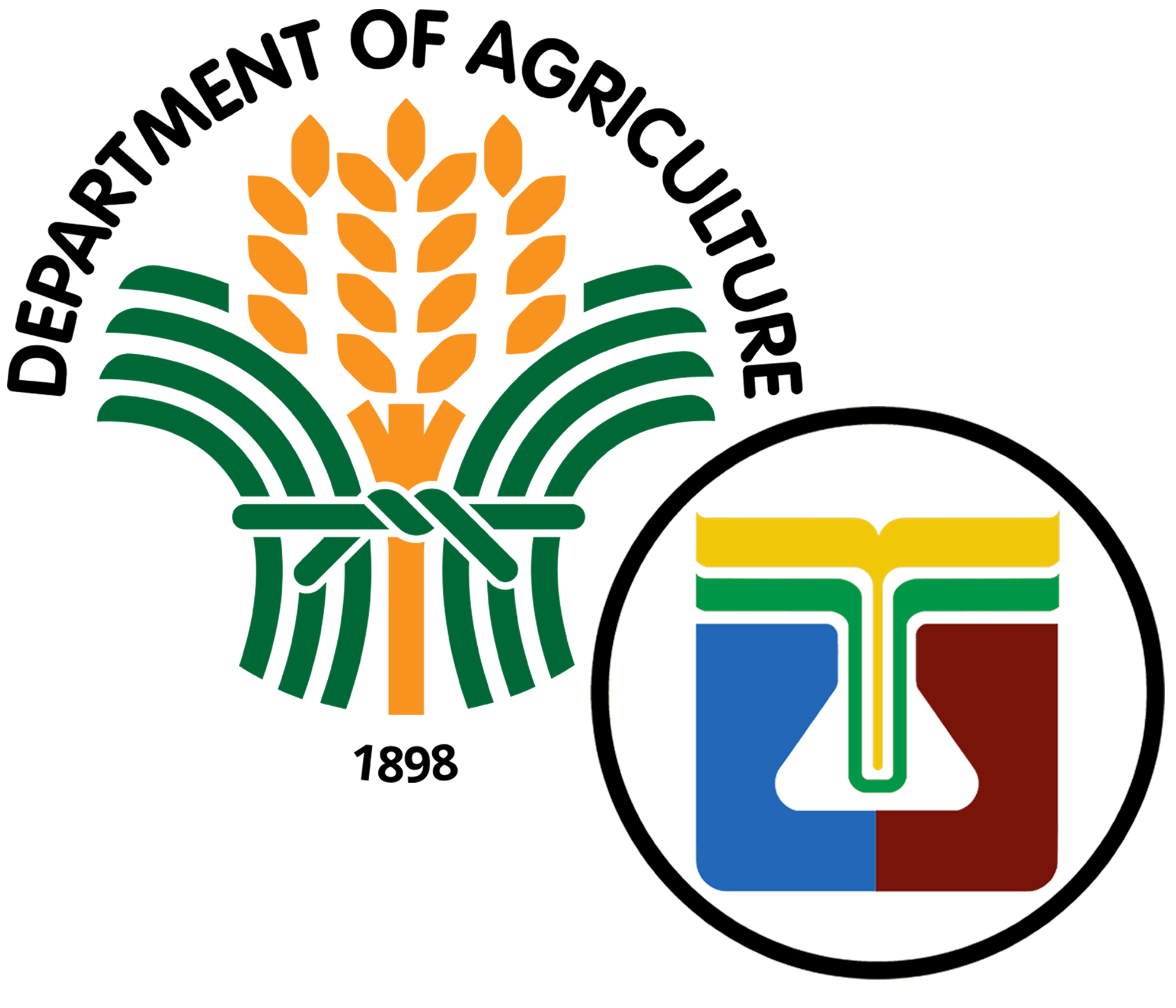The state of soil resources in the Philippines
The soil is a precious and basic agricultural resource. It is fundamental to life on earth. But because soil formation and development take considerable time, it is considered a finite resource. In a wet tropical country like the Philippines, it takes about 200 years to form a centimeter of soil. But if this is from a hard rock parent material, it could take as much as 500 years a build a centimeter of soil.
Yet, the soil left unprotected could be removed through various forms of erosion in a matter of minutes given a strong rain. We have a wet tropical climate with annual rainfall ranging from 1,000 mm to more than 4,000 mm, especially in the mountain areas. This is aggravated by the occurrence of an average of 15-20 typhoons per year and 60 percent rugged and mountainous topography, with more than 18 percent slope.
Philippine Agricultural Geography
The Philippines is an archipelago and along with this fragmentation comes divergent development that reflects local resource potential and varying social and political agendas. The agricultural economy of the Philippines is reflective of a complex mix of several cropping systems, numerous land control systems, localized labor systems, and differentiated trade, exchange and consumption systems (Gultiano, et.al. 2003). Several systems date back to the earlier centuries of European contact. Shifting agriculture is still extant. Five crops form the base for all regional patterns of agriculture in the country: rice, corn, yams, sweet potatoes, and bananas supplemented by coconuts as an enduring cash crop. Regional specialization results in one or more other crops being added to the rice-banana base and when agglomerated can constitute significant hectarages.
Rice is the traditional crop and central to the rural agricultural economy, covering almost half of the cultivated area. It is the staple food for almost three-fourths of the population. The Central Plain of Luzon is the largest regional producer. Southwestern Luzon, Eastern Panay, and the Bicol Peninsula are important production areas. Islands such as Bohol, Leyte and the Cagayan Valley form as secondary production areas. Most rice farms produce one crop per year in the wet season, especially where irrigation is deficient or non-existent. Rainfall is held on the land through the provision of bunds or small dikes. The risk of water deficits is high and rainfall variability can have a marked effect on yield on a year to year basis. Two crops of rice can be produced in areas with irrigation technology. Rice is grown on approximately 2.3 M hectares of which 850,000 hectares are irrigated and planted at least twice or sometimes three times a year. Thus, the effective rice area coverage is placed from 3.15 to 3.31 M hectares.
Corn was introduced to the Visayas in the 16th century and has since grown to be an important crop. It grows reasonably well in slightly drier environment surrounding lowland rice fields or on the slopes of hills. It has gained regional dominance where rainfall is sporadic and wet seasons can fail with some regularity, and also where soils and slopes are conducive to corn rather than to rice. Cebu island is one with its steeply sloping lands and limestone soils. Much of Mindanao is also conducive to its cultivation with its mountainous terrain and limited lowlands and lack of a wet rice tradition. Corn can be grown anywhere in the country but quite limited to the rainy season in areas with more seasonal rainfall. Both white and yellow corn are grown in the country. A primary corn-producing area surrounds Davao Gulf in southern Mindanao. A number of secondary production areas include the Cagayan Valley in Luzon, the Batangas Peninsula in Southwest Luzon, the Sorsogon Peninsula of southeastern Luzon, Eastern Panay island, and a wide area of western Mindanao. In the immediate post World War II era, the country was self-sufficient in corn. But from 1970s onwards as more corn has been channeled to livestock feeds than to human consumption, deficits occurred and imports increased.
Drivers of Soil Change and Nature of Land Degradation in the Philippines
Accelerated Water-induced Soil Erosion
The highest reported erosion rate was measured in a banana-coffee-pineapple intercropping at 421 tons/hectare/year and the lower reported soil loss was for primary forest at 0.2 tons/hectare/year (Asio, 1986). The World Bank (1989) figure is soil loss of 1 ton/hectare/year for undisturbed forest and 300-400 tons/hectare/year for kaingin. Siebert (1987) reported as much as 489 tons/hectare in just six months for hillside farms under cultivation in Leyte while Asio (1986) reported 1 ton/hectare/year soil loss in natural forests increasing to 23 tons/hectare/year under coconut and 1000 tons/hectare/year in kaingin.
Corn farming in the sloping uplands of the country is considered one of the most damaging agricultural production systems in the country in terms of erosion contribution. There have been several policy and economic studies conducted on this, notably by Briones (2010), Francisco, (1994), and delos Angeles (1998) showing economic impacts of erosion on productivity.
Soil erosion causes offsite effects such as sedimentation of our rivers, lakes, reservoirs, irrigation canals, and paddy fields further decreasing productivity by as much as 27 percent in a period of five years.
Deforestation
Most of Philippine forests have been cleared. From a total of 21 million hectares in 1900, this is down to 7 million hectares by 2005. Logging is primarily responsible for the degradation of primary forests to secondary forests and grasslands. Shifting cultivation and later intensive agriculture contributed. Forest lands were initially subjected to long-phase forest-fallow rotations for subsistence farming and ultimately transformed to more intensive, commercial-oriented agricultural production system, resulting to open access regime that coincided with high commodity demand leading to rapid resource depletion (Rola and Coxhead, 2005).
Flooding in the lowlands is one of the offsite impacts of deforestation.
Nutrient Mining and Soil Fertility Decline
Impacts from soil erosion
A major impact of erosion is loss of organic matter (dehumification) which is a form of chemical degradation and consequent decline in soil fertility and soil productivity. Philippine soils have already inherent low organic matter (OM) and this is further aggravated by erosion. Asio (1986) showed that a volcanic ash soil forest (classified as Andisols) with original 14.2 percent organic matter decreases to 11.6 percent OM when converted to pasture, to 11 percent OM when converted to bushland, to 6.9 percent OM when converted to grassland. A highly weathered forest soils with low clay activity (classified as Ultisols) originally with 7 percent OM decreased to 5.3 percent OM when converted to coconut and kudzu, to 4.1 percent OM when converted to coconut and bushes, to 3.8 percent OM when converted to kaingin , and even went down further to 3.2 percent OM despite being reforested.
According to FAO (1998), the undiscounted value of soil nutrient loss from eroded uplands was estimated around PhP 5.94 B (US$ 125M) representing 4.27 percent of the Gross Value Added in agriculture in the Philippines. Siebert noted that continuous cultivation of corn and sweet potato in the mountains of Leyte gradually exhausted soil calcium, magnesium, available phosphorus and organic matter levels, and also contributed to increased soil acidity.
Impacts from intensive cultivation and inorganic fertilizer application
Soil fertility decline, directly or indirectly associated with fertilizer application, is also beginning to cause concern. Reports of organic matter depletion and issues relating to negative soil nutrient balance as well as onset of secondary and micronutrient deficiencies have emerged. There is a declining trend in productivity even with mineral fertilizer applications under modern intensive farming methods. The dynamic status of nutrient management at farm level is at cross road during this period. Since the Green Revolution of the mid-1960s characterized by government investments in irrigation systems and modernization of agriculture through the use of high yielding varieties, inorganic fertilizers, chemical pesticides, and other synthetic chemical inputs like the use of antibiotics and growth hormones in the livestock sector, the Philippine agriculture has become predominantly conventional by the 1980s. The general trend based on soil analysis covering the period 1970s to 1990s indicated very active soil mining resulting in increased fertilizer inputs to sustain farm productivity. The period 1960-1970 is characterized by the need to use nitrogen fertilizers only. The succeeding decade of 1970- 1980 requires higher phosphorus fertilizer inputs in addition to nitrogen to maintain yield. The years 1980-1990 requires not only nitrogen and phosphorus fertilizers but also increased potassium plus micronutrients such as zinc for rice and magnesium for corn. The excessive use of urea fertilizers beyond the normal ratio of 3N:1P contributed to the stagnation of rice and corn yields and nutrient imbalance in the soil.
The 2010 IRRI paper “Rice in the Global Economy: Strategic Research and Policy Issues for Food Security” stated on page 29, Table 5 that the cropping intensity in the Philippines increased annually by 0.57 percent from the period 1970 to 2009. The paper “Soil Carbon and Nitrogen Changes in Long-term Continuous Lowland Rice Cropping” by Pampolino, et.al. published in SSSAJ:Vol 72:No3:May-June 2008: pp 798-807 sampled four long-term experiments in the Philippines with two or three rice crops grown each year with continuous or near continuous soil submergence, to determine the effect of fertilizer management on long-term changes in soil C and N and on C and N balances from 5.9 to 6.7. After 17 to 21 years of continuous rice cultivation, the concentration of total soil organic C (SOC) and total soil N (NT) in the top soil were greater with N-P-K fertilization than without fertilization. During the 15 years of additional continuous rice cropping, topsoil SOC and NT were consistently maintained or increased regardless of N-P-K fertilizer regime. Topsoil SOC increased up to 10% in an experiment with three rice crops per year and removal of all above ground plant biomass after each crop. Subsoil SOC and NT were not affected by fertilization. The N balances indicated that biological N2 fixation averaged 19 to 44 kg N per hectare per crop across the four experiments. Anerobic N mineralization (ANM) in the topsoil was maintained during 15 years of continuous cropping with NP-K fertilization in all four experiments. The results suggest that continuous cultivation of irrigated rice with balance fertilization on submerged soils maintained or slightly increased SOM and maintained soil N-supplying capacity.
Soil sealing (conversion of agricultural lands to other uses)
The country is reported to have 30 million hectares. Based on land classification, we have about 47 percent (14,207,582 hectares) alienable and disposable lands and 53 percent (15,792,418 hectares) non-alienable lands or forest lands. We have mentioned earlier that our forest lands presently cover only half of this figure, about 7 million hectares based on 2003 estimates. We anticipate some improvements because of the National Greening Program or government efforts to reforest.
Agricultural lands, irrigated – We have about 1.4 million hectares of irrigated lands and about a third constitutes large reservoir-backed national irrigation systems constructed in the 1960’s and 1970’s. By 1980’s up to the present, the nature of capital investments in irrigation is for small communal irrigation systems; and about two thirds of the irrigated lands are too small to be reflected on national maps, farmer-operated, and managed. The reported figure is only about 1,272,283.18 hectares. The rice areas reported on official statistics that vary within 3 million hectares yearly is based on areas harvested, or based on two cropping seasons, hence, double the actual rice area figure.
The agricultural lands, rainfed – The area coverage is approximately 10,006,545.25 hectares and could be further disaggregated into: rainfed rice and corn (6,044,257.57 hectares), coconut (3,562,485.22 hectares), sugarcane (374,996.77 hectares), and diversified crops – 24,805.69 hectares).
Of the total of approximately 11 million hectares of agricultural lands that we have, about 6 million are considered prime agricultural lands. Land reclassification and conversion from agricultural to non-agricultural is allowed under several laws. Very rare instance is a non-agricultural land reverted back to agricultural land use. There are also efforts of the government to address indiscriminate land conversion to protect our agricultural areas, but soil sealing (the technical term for conversion of agricultural lands to non-agricultural use) remains a major concern for the country. An Inquirer article by Joey Papa dated January 11, 2019 (“Stop land conversion”), he mentioned that in Region 3, a prime, irrigated rice land was converted into a huge business establishment. After about two years, the business was expanded with an annex structure, put up in another converted agricultural land just across the main establishment. Extensive areas of former rice lands in the Calabarzon (Cavite, Laguna, Batangas, Rizal, Quezon) are now exclusive subdivisions for the monied, many of whom already have other residential properties, and commercial and industrial sites. A large part of Marilaque (Manila, Rizal, Laguna, Quezon), especially in the supposedly protected areas of Tanay, Montalban, and Antipolo, Rizal, has also been converted into quarrying areas, or into resorts and subdivisions.
Responses to Soil Issues and Challenges
Issue on erosion – Promotion of sustainable land management practices
There are several notable institutions promoting soil conservation in the Philippines. BSWM’s banner program is Soil Conservation Guided Farm with several techno-demo farms in various parts of Luzon. The World Agroforestry Centre -ACIAR campaigns for Landcare with the center of its activities located in Claveria, Misamis Oriental and in Lantapan, Bukidnon. Bansalan, Davao del Sur is the birthplace of Sloping Agricultural Land Technology (SALT) and Food Always in the Home (FAITH) garden, disseminated by the Mindanao Baptist Rural Life Center (MBRLC) Foundation. PCAARRD pursues Conservation Farming Village Program under the National Program for Sustainable Upland Farming to showcase and replicate best practices on upland development, particularly soil conservation management techniques through active participatory approach.
Issue on deforestation
There is currently no forest convention similar to UNCCD, UNFCCC, and UNCBD and political trends seem to suggest that such a treaty in which all environmental, social, and economic aspects of forest ecosystem are included will not be created in the foreseeable future. The FAO Corporate Document Repository mentioned that there are ten relevant multilateral conventions related to forests which includes the three conventions already mentioned, and of the remaining seven, some worth mentioning are the Ramsar Convention on Wetlands, the Convention on International Trade in Endangered Species, Indigenous and Tribal Peoples Convention, and the International Tropical Timber Agreement.
Reforestation/Afforestation. This refers to bringing back the crop cover in once vegetation-rich but now vegetation-bereft lands. This includes new plantings, assisted natural regeneration, and enrichment planting. It also includes combination with some vegetative or infrastructural measures to stabilize the soil. Current reforestation program is called the National Greening Program that aims to reforest 1.5 million hectares.
Promotion of sustainable forest management (SFM) practices to ensure watershed protection and biodiversity conservation while economic benefits are achieved. Criteria and tools are used to conceptualize, evaluate, and implement sustainable forest management. The key elements involve seven thematic areas: extent of forest resources, biological diversity, forest health and vitality, productive functions and forest resources, protective functions of forest resources, socio-economic functions, legal-policy-and-institutional framework. Another evolving concept in the global scientific community is the ecologically sustainable forest management (ESFM) aimed to achieve a continuing balance of timber supply, economic and social benefits, while retaining a range of environmental values. Another important concept is sustainable yield, a technical term which relates to harvesting timber where the volume of wood removed from a forest each year must at least be equaled by the forest’s renewal of itself through natural regeneration and growth of trees in unharvested areas. Determining what the level of sustained yield and then monitoring and potentially altering it over time is a complex matter.
Issue on nutrient mining and soil fertility decline
By 2005, there has been a major shift in government policies owing to accelerated increases in the prices of farm inputs beyond the reach of ordinary farmers and a host of other issues like land degradation, climate change and biodiversity decline. Executive Order 481 was issued by President Gloria Macapagal Arroyo in December 27, 2005 to promote and develop organic agriculture as a farming scheme and to regulate the organic certification procedures. This is a significant milestone in the Philippine agricultural production policy as we refocus on our natural resources than on our external resources with which to establish our agricultural production systems. The national government recognizes that farming methods which neglect the ecology of the soil, crops, and nature damage the farming environment and inimical to our national interest.
Republic Act No. 10068 enacted by Congress in 2009 declared that it is the policy of the State to promote, propagate, and further implement the practice of organic agriculture in the Philippines. This Act promotes organic production systems that enhance biological diversity within the system, increase soil biological activity, maintain long—term soil fertility, recycle farm wastes, rely on renewable resources in locally organized agricultural systems, promote the healthy use of soil, water, and air as well as minimize all forms of pollution.
Despite agricultural modernization, there are efforts to revive agricultural heritage systems with emphasis on fallow and organic fertilization and integrated pest management practices under the concept of dynamic conservation. The concept of declaring National Agricultural Heritage Systems is currently being worked out by the Department of Environment and Natural Resources (DENR) with the Department of Agriculture (DA) and the National Commission for Culture and the Arts (NCCA) for dynamic conservation and adaptive management of these sites for their agro-biodiversity, food security, and heritage values. Other sustainable land management practices like crop rotation, crop diversification, and crop integration are also being promoted. An important activity conducted by non-government organizations in the country is the farmer-scientist partnership where local farmers are taught on preservation, propagation, and breeding of traditional rice varieties in situ to address and enhance varietal biodiversity as part of participatory rice breeding and farmer selection.
Issue on soil sealing
Without a national land use law, land conversion has been rampant. Local government officials, with the concurrence of the national agencies tasked to “protect” agrarian reform beneficiaries, use zoning ordinances as bases for land conversion, and they have the first and last word in the approval of an application for land conversion. The zoning ordinance referred to is the Strategic Agriculture and Fisheries Development Zones which has not stopped the conversion of prime agricultural lands into subdivisions or malls and other commercial complexes.
At the national level, the Network of Protected Areas for Agriculture and Agro-industrial Development (NPAAAD) has been delineated, but despite these network of protected areas and zoning ordinances, land conversion remains a major political and socio-economic issue in the country. It is argued that only genuine agrarian reform and a national land use law will give meaning and substance to the “pro-poor” declarations of every administration and put a halt to indiscriminate conversion of prime agricultural land to other uses.
References:
Asio, Victor, Reinhold Jahn, Federico O. Perez, Ian A. Navarrete, and Sergio M. Abit, Jr. 2009. A review of soil degradation in the Philippines. Annals of Tropical Research, 31[2]: 69-94, VSU, Leyte, Philippines.
Briones, Rohelano M., 2010. Addressing Land Degradation: Benefits, Costs, and Policy Directions. Philippine Journal of Development, 37 (1): 41-79.
FAO. 1998. Soil resource depreciation and deforestation: Philippine case study in resource accounting. Rome.
Gultiano, S., Balbarino E., Saz E. Urich P. (coordinator). 2003. “Geography of the Philippines”, Population Dynamics, Land Availability and Adapting Tenure Systems: Philippines, a case study, Office of Population Studies (University of San Carlos), Farm and Agriculture Resource Management Institute and Center for Social Research (Leyte State University), Paris, CICRED, FAO, pp 29-57.
Papa Joey C. 2019. Stop Land Conversion. https://opinion.inquirer.net/118806/stop-land-conversion.
Siebert, S. F. 1987. Land use intensification in tropical uplands: effects on vegetation, soil fertility, and erosion. Forest Ecology and Management 21:37-56.
World Bank. 1989. Philippine environment and natural resource management study. A World Bank Country Report. The World Bank, Washington, D.C.



